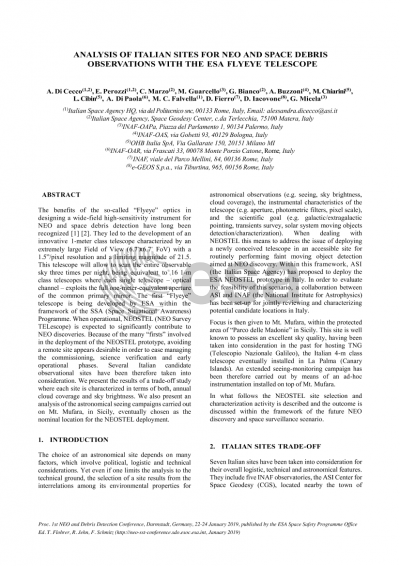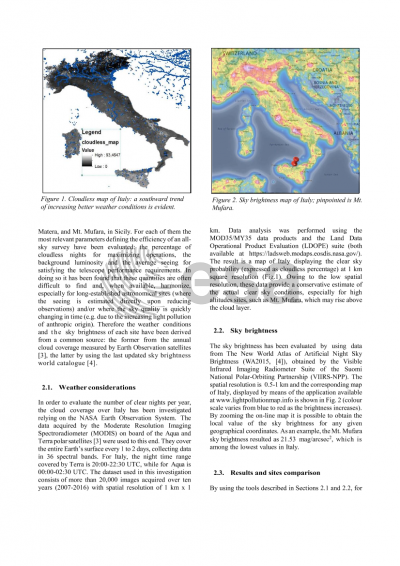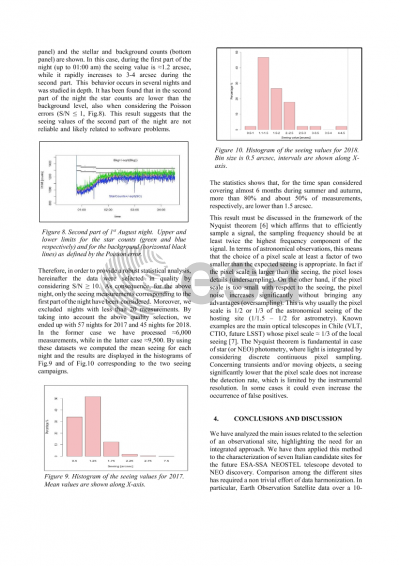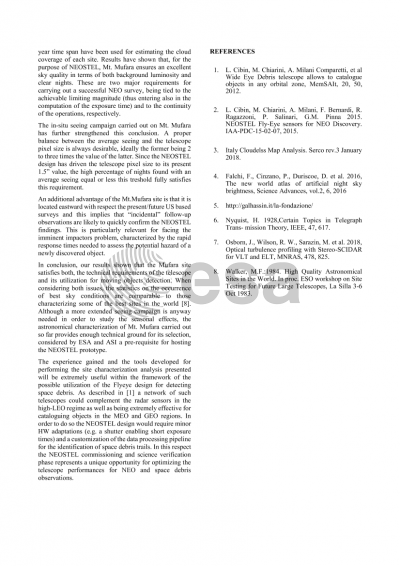Document details

Abstract
One of the major goals of the ESA Space Situational Awareness (SSA) Programme is to develop and operate ground-based surveys for the detection of NEO and space debris. When focussing on the optical component, the advantages of using telescopes with very large Field-of-View (FoV) has been demonstrated, albeit in different configurations for the NEO and the SST (Space Surveillance and Tracking) segments. To this purpose, ESA has developed an innovative telescope based on the so-called “Fly-Eye” technology which allows a FoV of 6.7°x6.7° and a resolution scale of 1.5”/pixel. The Fly-Eye optical design is equivalent to operating 16 one meter class telescopes sharing the same primary mirror. Thus it is likely to contribute significantly to the worldwide NEO discovery network by surveying the visible sky two to three times per night. The first prototype of the Fly-Eye will be completed soon and the choice of the hosting site has been taken into consideration. In this respect one should consider that the Fly-Eye is an innovative telescope with an entirely new optical design covering an extremely wide field of view in order to perform a challenging NEO survey never attempted in Europe before. Therefore, the choice should account for technical, logistic and decisional constraints. Within this framework the possibility to install the telescope in Italy has been thoroughly analysed taking into consideration several candidate observationsl sites located from North to South of Italy (Lat 37°-46° N; Long 11°-17°E). We present the results of the trade-off study carried out to this end where each site has been characterized in terms of both annual cloud coverage and sky brightness by using Earth Observation satellites. The astronomical seeing has also been estimated from historical data (when available) or performing in-situ measurement campaigns, namely at the ASI Space Geodesy Center (located close to the town of Matera) and on top of Mt. Mufara in Sicily. Our results support the choice of Mt. Mufara as a steady site, with the additional possibility of performing a commissioning and science verification phase in a temporary location in order to properly address the challenging operational requirements on both HW (e.g. beam splitting, cameras overlapping, mechanical/rotational performances, focussing system) and SW (e.g. moving object detection pipeline, CCDs mosaic recomposition, FWHM degradation, false positive detection algorithms, astrometric accuracy, data products verification). An interesting by-product of this activity is the possibility of transferring to the SST observational scenario some of the technical and logistic considerations emerged during this study.
Preview







